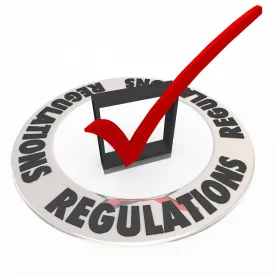In its blog post announcing the Fall 2018 Rulemaking Agenda, the CFPB announced that it is “considering how rulemaking may be helpful to further clarify the meaning of ‘abusiveness’ under the section 1031 of the Dodd-Frank Act.” This statement follows press reports of Acting Director Mulvaney commenting about the possibility of a rulemaking to define the meaning of “abusiveness” under Dodd-Frank, to bring clarity to this aspect of the Bureau’s authority.
Professor Adam Levitin published a blog on Credit Slips in which he argued that such a rulemaking seems like a non-event, since the Bureau never really used the “abusive” prong of Dodd-Frank in any instance in which “unfair” and/or “deceptive” were not also used. Prof. Levitin notes that the rulemaking process would likely be difficult, and wouldn’t make any difference in the Bureau’s future use of its powers under Dodd-Frank.
Although I enjoy disagreeing with Prof. Levitin, in this instance, I think he has it right. Having watched the Bureau’s enforcement activity closely over the last seven years, I saw the “abusive” label used in a number of instances, but they all seemed like situations in which “unfair” or “deceptive” were equally applicable. Moreover, the real problem with CFPB enforcement was not the absence of a definition of the terms “unfair,” “deceptive” or “abusive,” but the fact that the Bureau didn’t seem bound by the definitions of any of the terms, and simply labeled practices to be UDAAP violations without worrying about applying the elements of a statutory test. The Bureau’s current leadership has signaled that it does not plan to continue this practice, but no rulemaking is required to prevent it – just leadership that respects the limits of its authority under the law.
Professor Levitin makes another observation, too, that I think is worth highlighting. He notes, correctly, that state attorneys general cannot make claims against national banks or federal savings associations to directly enforce the UDAAP provisions in Dodd-Frank. However, under § 1042(a)(2) of Dodd-Frank, a state attorney general can bring claims to enforce “a regulation prescribed by the Bureau” under the UDAAP provisions of the statute. Thus, an “abusive” rulemaking would create an argument that this state attorney general authority has been triggered.
Against this backdrop, I think the practical impact of an “abusive” rulemaking, even if it is completed, is likely to be very limited, and possibly counterproductive. The “abusive” prong of Dodd-Frank has always been a magnet for expressions of concern about the Bureau’s activities, but I think a rulemaking that attempts to define the term more specifically will be only marginally helpful, at best. It will be interesting to see if the rulemaking process moves forward, as suggested in today’s Rulemaking Agenda.



 />i
/>i
